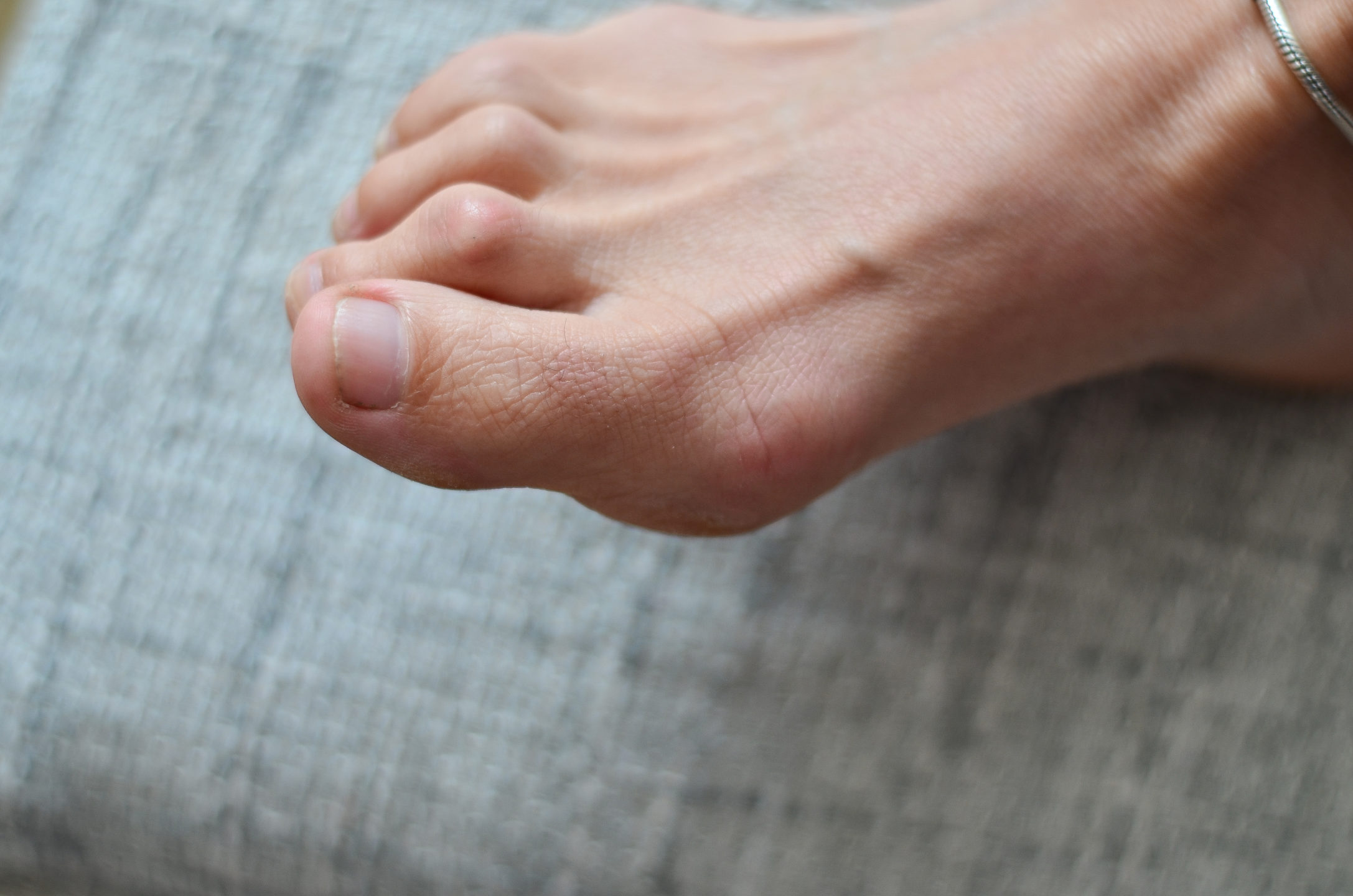Access your own patient portal, provided by NCSH.

Surgery
Is it a Hammertoe? Learn about Hammertoe Correction Options
Are you concerned because you have a bent toe? Do you wonder why or what’s wrong with it? You may have a hammertoe, a condition where your second, third, or fourth toe is flexed or bent at its middle joint, looking like a hammer.
Along with cosmetic reasons, many people choose to visit a podiatrist (foot specialist) because the hammertoe is also causing pain or discomfort. The good news is that when it’s caught early, a hammertoe can usually be treated or corrected without surgery, often with hammertoe splints or exercises. North Carolina Specialty Hospital explains the causes and symptoms of the condition, available treatments, and when surgery might be recommended.
Five Treatment Options to Help With Hammertoe Correction
 A hammertoe develops when a muscle imbalance puts pressure on toe tendons and joints. For example, when wearing shoes that don’t fit well, are too tight, or are too high, the toe is bent where it’s pushed against the toe box. If a toe bends too long in that one position, the muscles and joints tighten in place, making it difficult to straighten the toe. That’s when the “hammer” shape happens.
A hammertoe develops when a muscle imbalance puts pressure on toe tendons and joints. For example, when wearing shoes that don’t fit well, are too tight, or are too high, the toe is bent where it’s pushed against the toe box. If a toe bends too long in that one position, the muscles and joints tighten in place, making it difficult to straighten the toe. That’s when the “hammer” shape happens.
In addition to its bent appearance, hammertoe symptoms also include:
- Pain when walking (or at the top of your toe or the ball of your foot)
- A corn or callus on the joint
- Redness, swelling, or stiffness at the joint
When you visit your foot doctor, they will do a physical examination to find out if the toe is still flexible or rigid. This helps determine which treatments to pursue. In some instances, you may also have an X-ray.
After diagnosing the condition and the extent of joint flexibility or rigidity, your doctor may prescribe the following treatments:
1. Wear comfortable shoes. In early stages, your doctor will recommend that you avoid tight, higher-heeled shoes to keep from putting pressure on your toes. Shoes should have a roomy toe box and be one-half inch longer than your toes.
2. Reduce corns or calluses on hammertoes. Using a pumice stone or file after soaking your foot in warm water or taking a bath, as well as applying a moisturizing lotion, can help reduce discomfort from pressure against the shoe. Using corn or callus pads may also help.
3. Manage pain. Your doctor may tell you to take over-the-counter pain or anti-inflammation medication or to apply ice if you’re suffering from discomfort. Depending on the severity of the pain, your doctor might recommend cortisone shots.
4. Exercise your toes. If your toes are still flexible, they may benefit from exercises for hammertoes that can help strengthen foot muscles. These include:
- Towel curls, where you place a towel under your foot and use your toes to crumple it
- Extending, curling, splaying, and moving toes independently to help with contracture
- Picking up small objects with your toes
5. Wear hammertoe orthotics. These options, also called hammertoe splints, act as a straightening force on the muscles and can keep the condition from worsening. These include:
- Toe wraps: a thin bandage with Velcro that binds the hammertoe to the one next to it
- Toe socks: socks with five toe cutouts and padding to help keep toes separate from one another
- Toe separators: gel holders that align toes and stretch muscles
These five treatment recommendations can help alleviate discomfort and stop progression of the condition. However, if your hammertoe is too rigid and unable to bend or contract, gets in the way of your activities, or causes severe pain, your doctor may discuss surgical options with you.
What To Expect When Surgery for Hammertoes is Recommended
Hammertoe surgery is usually done on an outpatient basis with a local anesthetic. Depending on your condition, three surgical options include:
- Lengthening of the tendons to reduce the imbalance (performed if there is still some flexibility)
- Transferring tendons from the bottom to the top of the toe to pull it straight (also an option if there is still flexibility)
- Arthrodesis for rigid joints, a procedure using joint fusion to straighten the toe
Recovery can take from four to six weeks. Initially, patients need to keep weight off their foot. Then, they may start weight-bearing exercises and wear special shoes for two to six weeks, gradually moving to a supportive athletic shoe.
If You Think You Have a Hammertoe, North Carolina Specialty Hospital Can Help
Our team of podiatrists and orthopedic surgeons is one of the most highly skilled groups in the southeastern United States—but we’re right here in your neighborhood. You can trust we’ll help you find the most effective treatment for hammertoe, or we’ll get you back on your feet as quickly as possible if surgery is recommended.
To schedule a consultation, look on our Physicians page under Orthopedics/Podiatry and click on your desired podiatrist’s photo to make an appointment from their personal page. Or contact us today.
Stay Current
Educational Articles & More
View News & Press